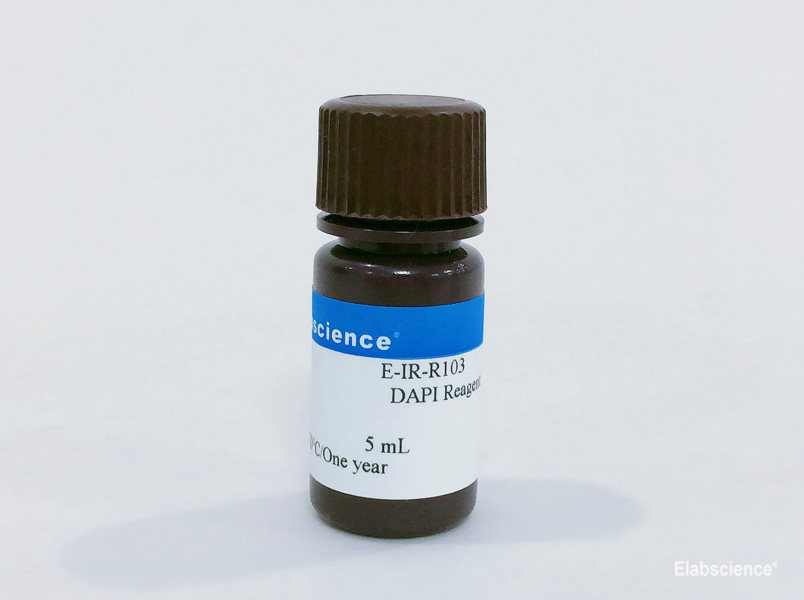Introduction
DAPI (4 ', 6-diamidino-2-phenylindole), is a kind of fluorescent dye which can strongly combine with DNA. It can be observed by fluorescence microscope. DAPI can penetrate the normal cell membrane, it can be used for staining of living cells or fixed cells. CAS number: 28718-90-3.
DAPI can penetrate the cell membrane and combine with the double stranded DNA in the nucleus and produces more than 20 times stronger fluorescence than DAPI itself. It has stronger sensitivity to double stranded DNA staining than EB. Cells can be seen with blue fluorescence when DNA combine with DPAI by microscope. And the efficiency of cell labeling is high (almost 100%) without any effect on living cells. DAPI staining is often used to detect apoptosis. After staining, it is observed by fluorescence microscope or flow cytometry. DAPI is also commonly used in general nuclear staining and in some specific cases double stranded DNA staining. After heat shock treatment, the cells staining with DAPI for 3 min, and the morphological changes of nuclei could be seen by fluorescence microscope.
The maximum excitation wavelength of DAPI is 340 nm, and the maximum emission wavelength is 488 nm. When DAPI combines with dsDNA, the maximum excitation wavelength is 360 nm, and the maximum emission wavelength is 460 nm. The DAPI staining solution can be directly used for nuclear staining of fixed cells or tissues.
Components
|
Cat
|
Products
|
5 mL
|
10 mL
|
50 mL
|
Storage
|
|
E-IR-R103
|
DAPI Reagent (1 μg/mL)
|
5 mL
|
10 mL
|
50 mL
|
2~8°C
|
Experimental Procedure
1. For the fixed cell or tissue samples, wash and remove the fixative properly. If immunofluorescence staining is needed, it can be done first, then add DAPI to stain the nucleus. If no other staining is needed, DAPI staining is performed directly.
2. For adherent cells or tissue sections, add a small amount of DAPI Reagent to cover the sample. For suspension cells, add at least 3 times volume of the sample and mix well to stain the nucleus.
3. Incubate at room temperature for 5~10 min.
4. Discard DAPI Reagent, wash with TBST, PBS or normal saline for 2~3 times, 3~5 min/time to wash off the unbinding DAPI.
5. Observe the cells by fluorescence microscope with 360 nm excitation wavelength and 460 nm emission wavelength.
Storage
Store at 2~8°C in dark. Avoid freezing. Valid for 12 months.
Cautions
1. This
product is irritating, please be careful when handling it and avoid direct
contact with the human body or inhalation.
2. For
your safety and health, please wear lab coats and disposable gloves for
operation and follow the procedures of laboratory reagent operation.
3. Avoid extended exposure of the samples to direct light to protect the fluorophores from quenching.There are quenching problems
in fluorescent dyes. It is recommended to observe the results as soon as possible after dyeing, or use the Anti-Fluorescence
Quenching Agent (E-IR-R119) to slow down the fluorescence quenching.










